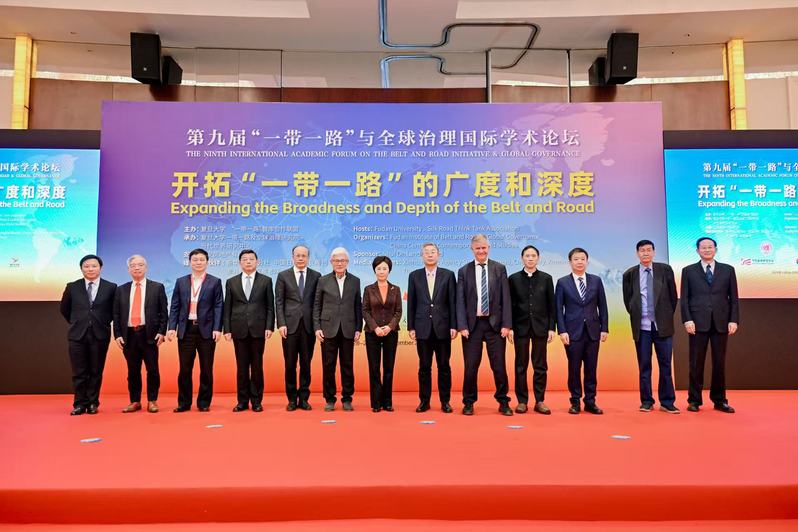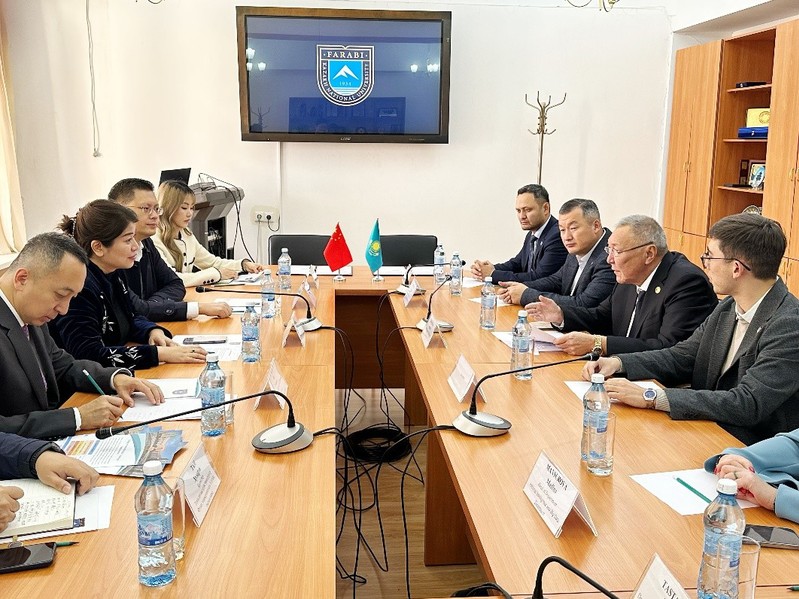Zhong Ming, the first Shanghai doctor dispatched to Wuhan is now home safe and sound.
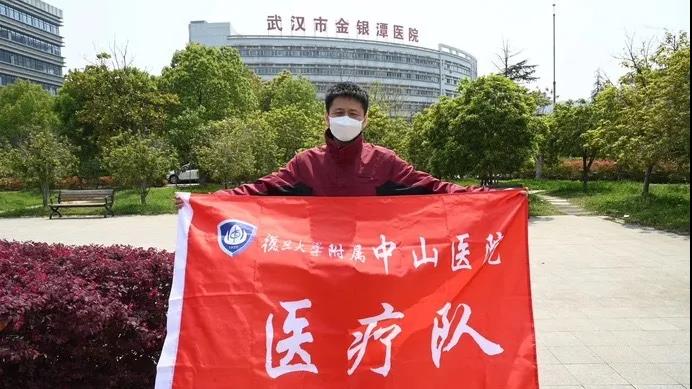
Zhong Ming holds a flag printed with “Medical Team of Fudan-Zhongshan Hospital” in front of Jinyintan Hospital in Wuhan.
“Farewell, my friends,” Doctor Zhong Ming wrote in his WeChat Moments on the eve of departure from Wuhan. “I will always remember the beginning of 2020, and all that has happened at the upper levels of the South Building of Jinyintan Hospital.” After 75 days of fighting COVID-19 in the once epicenter of the epidemic, he finally hit the road back to Shanghai on April 6.
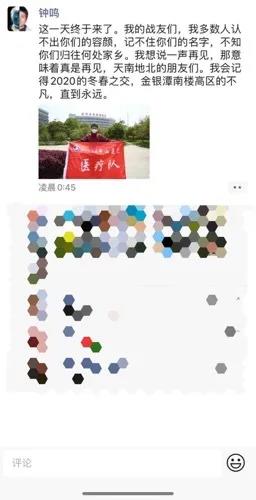
Zhong Ming bids farewell to his co-workers during the past months via his WeChat Moments.
Zhong Ming is the Deputy Director of ICU at Zhongshan Hospital affiliated to Fudan University. He was the first Shanghai-based doctor dispatched to Wuhan amid the outbreak. When the majority of non-Hubei medics went back home last month, however, he stayed behind and continued to treat the remaining patients at Jinyintan Hospital.
The 2020 Chinese New Year’s Eve fell on January 23. It was supposed to be the most cheerful and relaxing moment of the year for the Chinese, but Zhong was on the day already on his way to Wuhan to assist the fight against COVID-19. Before everything got disrupted by the outbreak, he had booked a trip to Australia with his wife and daughter. He had recently completed his PhD studies away from home in the U.S. and yearned to spend the Spring Festival with his family, which he hadn’t been able to do for quite a few years.
At 10 a.m. on January 23, on receiving the assignment to assist Wuhan from the National Health Commission, Zhong immediately had his air tickets refunded and got ready to be the first Shanghai medical expert to leave for the city. Time was limited for him. The train was to depart at 4 p.m., so he could only pack a few necessities. “My family is used to such situation,” said Zhong Ming. His wife, also a medical worker, understood his responsibility and supported him as always. Before Zhong boarded the train to Wuhan, his daughter hugged him tightly and said, “Dad, we will wait for you to come back.”
 Doctor Zhong Ming in a full-coverage protective suit
Doctor Zhong Ming in a full-coverage protective suit
As soon as he arrived in Wuhan the next morning, Zhong joined the tug-of-war with the virus at Jinyintan Hospital, the city’s first hospital designated to treat COVID-19 patients.
Before COVID-19, the hospital ran 3 ICU wards with 16 beds. Soon other spaces in the hospital were transformed into isolation wards to accommodate more patients. On the first few days of the treatment, one doctor sometimes had a workload of three doctors tosave protective suits.
Zhong worked 10-11 hours a day on average, but the physical burden was nothing compared to mental pressure during the process. As soon as he got down to work at the hospital, he immediately realized that the situation was more severe than he had expected. Appointed as the leader of the clinical treatment team, Zhong was in charge of treating the most severe cases—patients who had undergone various treatments but showed no sign of recovery. These were the hardest scenarios to deal with, demanding Zhong’s constant alert to every subtle change in the patient’s condition and to adjust treatments accordingly.
Zhong, commended by his co-workers as “the master of ECMO”, had nearly 20 years of experience in treating patients with acute and severe condition. With rich experience dealing with major public emergencies such as SARS in 2003 and Wenchuan earthquake in 2008, he initially didn’t expect the COVID-19 outbreak to be such a thorny issue. The virus spread so quickly that people were not fully prepared to cope with it. “The past experience suddenly failed,” said Zhong.
To treat critically ill patients, he resorted to intensive treatments like intubation, prone positioning, etc. When all these failed, he would have to turn to ECMO, regarded by many as the last-ditch effort to sustain one’s life. However, ECMO is also not a panacea. In early February, Zhong already warned the public that the effect of ECMO varied from person to person, and if a patient had multiple organ failures, ECMO alone could hardly help.
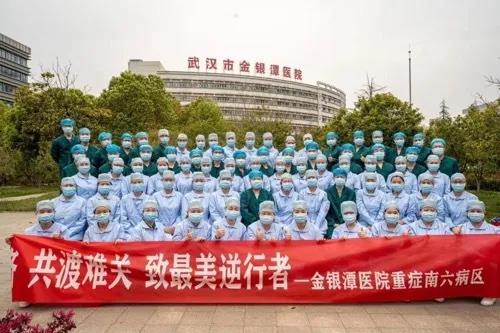
Zhong Ming and his co-workers, also from outside of Wuhan, pose for a photo in front of Jinyintan Hospital in Wuhan.
After two weeks of battling with the virus, Wuhan began to see light at the end of the dark tunnel, thanks to the more than 40,000 medics dispatched from the rest of Hubei and medical supplies from all over the world. A package of effective treatments were identified. More patients were cured and discharged.
Even when everything seemed to be moving on the right track, Zhong kept the same work intensity as before. Joining the supervision team for COVID-19 control in Wuhan, he traveled among multiple hospitals, carefully analyzing each case. For him, the recovery of patients was what he needed most for a morale boost. He said that seeing patients recovering and families reunited were his biggest relief. Zhong also had his family cheering him up from the other side of the screen. Time permitting, he would always call or text his family though worn out from the huge workload.
The 75 days on the frontline also pushed him to reflect on ICU practices. He believed that the outbreak had underscored the importance of a mature medical system in public health emergencies to the forefront. As ICUs were supposed to be fully prepared at any time, Zhong said he would share his first-hand experience in Wuhan and share it with his team in Shanghai.
In an earlier interview, he admitted that first thing he would do back home was to spend a normal weekend. “I did not realize before that an off-work day could be so precious,” said Zhong. Now his wish can finally be fulfilled.
Source: Shanghai Observer, xinmin.cn, Hubei TV, ifeng.com, shxwcb.com
Editor: Deng Jianguo, Li Yijie


